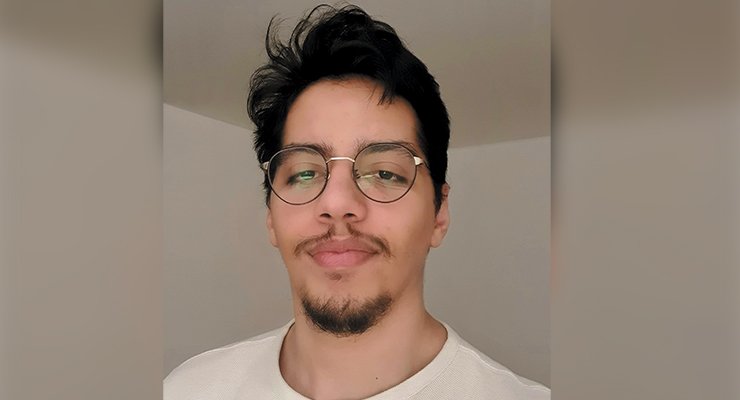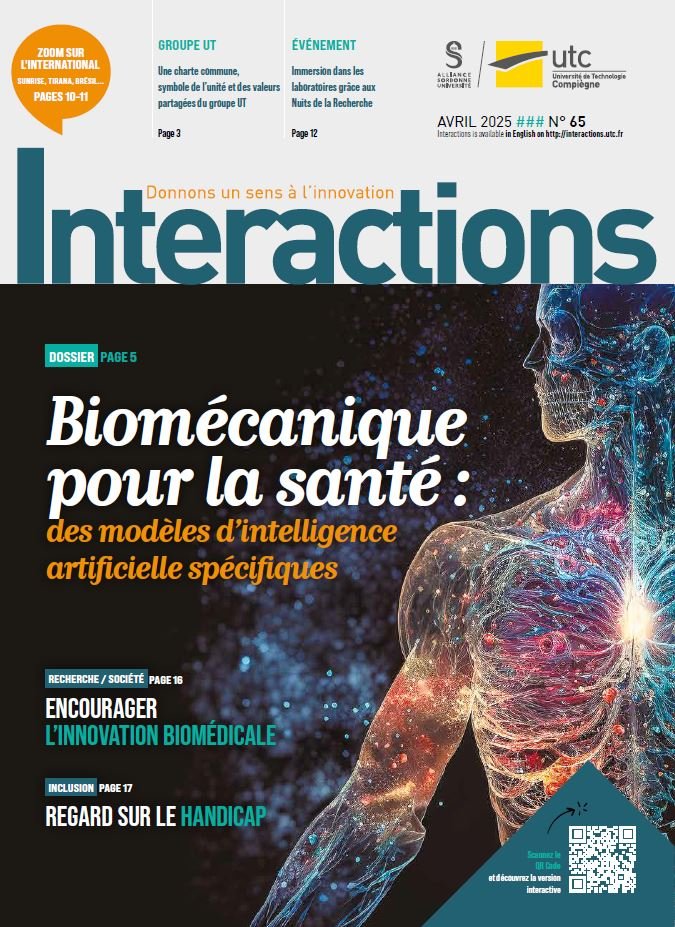A young man who learned how to bounce back

Smaïn Fettem, who graduated from the UTC in 2023 majoring in biological engineering, is currently a research engineer at the European Genomic Institute for Diabetes (EGID), an international institute dedicated to research into diabetes (types 1 and 2). He is working on AI tools designed to predict whether a person is likely to develop type 2 diabetes. Portrait of a young man who, despite running into a few potholes in the road, was always able to bounce back.
The first setback came in 2016, after he had passed his science baccalaureate, when he enrolled in medical school. ‘At the time, treating people seemed like a wonderful mission’, he confides. However, he soon realised that this was not the path he wanted to follow. Thinking back to his childhood dream of becoming an inventor to help others, he decided after two months to join a “preparatory class” at his lycée. A few months later, he left the preparatory class, his second setback, but this gap year enabled him to clarify his educational and professional ambitions. ‘I realised that what I wanted was to work in biomedical engineering, a field that develops devices to improve patient care’, he explains.
Seen in this perspective, rhz university UTC, renowned for its excellence in biomedical engineering, was the obvious choice for Smaïn Fettem. However — and this was to be the final pitfall — after his application was assessed, he was refused admission. He didn’t give up, however and opted for the IUT A in Lille, where he began studies in electrical engineering and industrial computing (GEII), seeing it as a possible gateway to what was his passion: biomedicine. For two years, he gave himself the means to achieve his ambitions and finished among the top-ranking students in his year. With his Lille degree, he returned to the UTC, this time being successfully admitted in the biological engineering programme. ‘This time, I was on the right track. After a first year in a rather general branch, I was lucky enough, at the beginning of the second year, to do a placement at the Signal and Image Processing Laboratory (LTSI) in Rennes. It was there that I began to work on AI and to grasp its full potential in a wide range of fields, particularly biomedical domains’, explains Smaïn Fettem. His endof- studies placement took him to Carmat, a company specialising in artificial hearts. There, he took a break from AI and worked mainly on signal processing.
However, he soon got back into AI, since, with his UTC diploma in hand, he joined EGID as a research engineer. ‘We’re working on tools to predict whether or not a person will develop type 2 diabetes during their lifetime. In concrete terms, we can say that the DNA between individuals is 99.9% identical, with the remaining 0.1% constitutes genetic variations between individuals, or more commonly known as ‘variants’. We have a database of several million variants, and that’s where the role of AI is important, more specifically the large language models capable of providing huge amounts of input data, which will enable us to predict whether a given person will develop diabetes, and which particular variants or combinations of variants will be responsible for it’, he says. $
His experience at UTC? ‘I particularly appreciate the fact that we are treated as future engineers and not as students. Hence the importance given within this university to the development of our critical sense, but also to the acquisition of real autonomy and a spirit of innovation, but not ignoring the ethics and impact of that same innovation. Engineers need to take a step back and realise that they have a duty of responsibility with regard to the tools they are going to develop. Will they help or harm people? That’s the key question’, he concludes.
BIO EXPRESS
- 2020: admission to UTC
- 2021: placement in the LTSI-Rennes (Signal and Image Processing Laboratory) and his first encounter with AI
- 2024: took up research intensive engineering post at the European Genomic Institute for Diabetes
MSD




